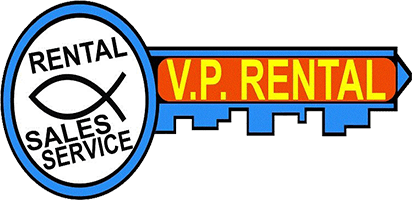
Why Rent?
Minimum Inventory
Ownership can be very expensive when equipment is idle. Combining ownership of basic equipment with rental equipment as needed will minimize idle time.
Warehousing
Use of rental equipment eliminates the need for large storage areas; buildings, thus, overhead in your cost of doing business is minimized.
Maintenance
Rented equipment includes full maintenance, no repair shop, no spare parts inventory, no mechanics, no added maintenance payroll or maintenance record keeping.
Disposal Costs
Preparing used, obsolete equipment for resale, advertising and selling time are factors of ownership that do not occur in renting.
Inventory Control
The presence of continuous billing on rented equipment establishes personal accountability. Inventory loss due to pilferage is minimized.
Conservation of Capital
Renting construction equipment frees your capital for other potentially more profitable uses. Right Equipment for the Job
Eliminate the hidden costs of inefficiency due to use of wrong size or type of equipment and the maintenance and repair incurred. Rental equipment insures the right equipment for the job.
Breakdowns
Virtually all equipment is subject to occasional breakdowns. However, when rented equipment breaks down idle time is minimized through replacement by the rental company and repair costs are eliminated.
Equipment Obsolescence
Ownership of equipment involves the risk of rising wage costs and slower job completion time due to owning worn, obsolete models when new, better faster models are available from our rental company.
Cost Control
Knowing the true costs of owned equipment is difficult. Rented equipment offers you just one accountable cost figure, the rental invoice cost.
Taxes/Licenses
Personal property taxes and license costs are eliminated on rented equipment.
Increase in Borrowing Capacity
Contractors who rent instead of purchase find borrowing easier with better ratio of assets to liabilities since equipment does not appear as a liability on the balance sheet. The normal line of bank credit is not disturbed, a most important asset in securing bonds for construction work.
Leasing- involves a contractually agreen upon period of time for which the customer agrees to terms that repay a portion of the purchase price of the equipment leased. Some leasing includes maintenance' most does not.
Rent-to-own - also involves a contract - often for as long as 52 weeks, or eve 78 weeks, in which the customer buys the product, paying high interest rates. The customer has the option of returning it during the life of the contract. RTO centers offer a way to purchase merchandise to those who lack credit, can't make the down payment, or are too poor to finance a purchase at a traditional department store.
Rent-to-own centers concentrate on home furnishings such as large-screen televisions, audio home entertainment centers, computers, furniture, jewelry and home appliances.
Ownership can be very expensive when equipment is idle. Combining ownership of basic equipment with rental equipment as needed will minimize idle time.
Warehousing
Use of rental equipment eliminates the need for large storage areas; buildings, thus, overhead in your cost of doing business is minimized.
Maintenance
Rented equipment includes full maintenance, no repair shop, no spare parts inventory, no mechanics, no added maintenance payroll or maintenance record keeping.
Disposal Costs
Preparing used, obsolete equipment for resale, advertising and selling time are factors of ownership that do not occur in renting.
Inventory Control
The presence of continuous billing on rented equipment establishes personal accountability. Inventory loss due to pilferage is minimized.
Conservation of Capital
Renting construction equipment frees your capital for other potentially more profitable uses. Right Equipment for the Job
Eliminate the hidden costs of inefficiency due to use of wrong size or type of equipment and the maintenance and repair incurred. Rental equipment insures the right equipment for the job.
Breakdowns
Virtually all equipment is subject to occasional breakdowns. However, when rented equipment breaks down idle time is minimized through replacement by the rental company and repair costs are eliminated.
Equipment Obsolescence
Ownership of equipment involves the risk of rising wage costs and slower job completion time due to owning worn, obsolete models when new, better faster models are available from our rental company.
Cost Control
Knowing the true costs of owned equipment is difficult. Rented equipment offers you just one accountable cost figure, the rental invoice cost.
Taxes/Licenses
Personal property taxes and license costs are eliminated on rented equipment.
Increase in Borrowing Capacity
Contractors who rent instead of purchase find borrowing easier with better ratio of assets to liabilities since equipment does not appear as a liability on the balance sheet. The normal line of bank credit is not disturbed, a most important asset in securing bonds for construction work.
Definitions
Renting - is for a short or indeterminate period of time. It can be less than one day, or for as long as the customer wants it to be. The important thing is that the customer can return the rented item and pay for the time he has the equipmment. The customer's charges and liability begin and end with the rental period - which the customer controls. Renting never inclues a guaranteed period of time, and renting always includes maintenance.Leasing- involves a contractually agreen upon period of time for which the customer agrees to terms that repay a portion of the purchase price of the equipment leased. Some leasing includes maintenance' most does not.
Rent-to-own - also involves a contract - often for as long as 52 weeks, or eve 78 weeks, in which the customer buys the product, paying high interest rates. The customer has the option of returning it during the life of the contract. RTO centers offer a way to purchase merchandise to those who lack credit, can't make the down payment, or are too poor to finance a purchase at a traditional department store.
Rent-to-own centers concentrate on home furnishings such as large-screen televisions, audio home entertainment centers, computers, furniture, jewelry and home appliances.
